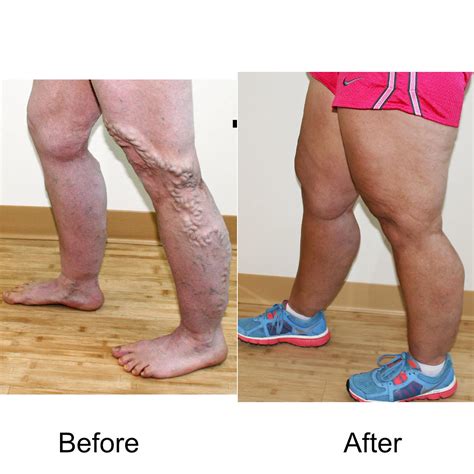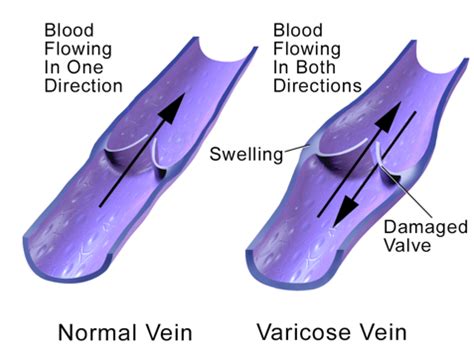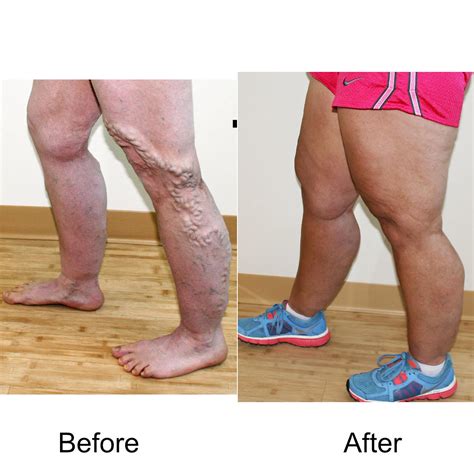Intro
Discover effective 5 varicose veins treatments, including sclerotherapy, laser therapy, and endovenous ablation, to alleviate spider veins, venous insufficiency, and leg ulcers, promoting healthy blood circulation and vein removal.
Varicose veins are a common condition that affects millions of people worldwide, causing discomfort, pain, and embarrassment. The good news is that there are several effective treatments available to alleviate the symptoms and improve the appearance of varicose veins. In this article, we will discuss the importance of treating varicose veins, the benefits of various treatment options, and provide an in-depth look at five varicose veins treatments.
Varicose veins are enlarged, twisted veins that can appear anywhere on the body, but are most commonly found on the legs. They occur when the valves within the veins become damaged, causing blood to flow backwards and pool in the veins. This can lead to a range of symptoms, including pain, swelling, and discoloration. If left untreated, varicose veins can lead to more serious complications, such as blood clots, ulcers, and skin discoloration. Therefore, it is essential to seek medical attention if you are experiencing symptoms of varicose veins.
The treatment of varicose veins has evolved significantly over the years, with a range of options available to suit different needs and preferences. From non-invasive procedures to surgical interventions, there are various ways to treat varicose veins. The choice of treatment depends on the severity of the condition, the size and location of the veins, and the individual's overall health. In this article, we will explore five varicose veins treatments that are commonly used to alleviate symptoms and improve the appearance of varicose veins.
Introduction to Varicose Veins Treatments

Benefits of Varicose Veins Treatments
The benefits of varicose veins treatments are numerous. Not only can treatment alleviate symptoms and improve the appearance of the veins, but it can also prevent complications and improve overall quality of life. Some of the benefits of varicose veins treatments include: * Relief from pain and discomfort * Improvement in the appearance of the veins * Reduction in swelling and inflammation * Prevention of complications, such as blood clots and ulcers * Improvement in overall quality of life5 Varicose Veins Treatments

1. Sclerotherapy
Sclerotherapy is a non-invasive treatment that involves injecting a solution into the affected vein to close it off. The solution causes the vein to scar and close, and the blood is then redirected to healthier veins. Sclerotherapy is typically used for smaller varicose veins and spider veins.
2. Endovenous Laser Therapy (EVLT)
Endovenous laser therapy is a minimally invasive treatment that uses a laser to heat the affected vein and close it off. The procedure is typically performed under local anesthesia and takes about 30-60 minutes to complete. EVLT is commonly used for larger varicose veins.
3. Radiofrequency Ablation (RFA)
Radiofrequency ablation is a minimally invasive treatment that uses heat to close off the affected vein. The procedure involves inserting a catheter into the vein and using radiofrequency energy to heat the vein and close it off. RFA is typically used for larger varicose veins.
4. Phlebectomy
Phlebectomy is a surgical procedure that involves removing the affected vein from the body. The procedure is typically performed under local anesthesia and takes about 30-60 minutes to complete. Phlebectomy is commonly used for larger varicose veins.
5. Compression Therapy
Compression therapy involves wearing compression stockings or bandages to apply pressure to the affected area. The pressure helps to improve blood flow and reduce swelling. Compression therapy is typically used for mild to moderate cases of varicose veins.
What to Expect During Varicose Veins Treatment

Risks and Complications of Varicose Veins Treatments
While varicose veins treatments are generally safe and effective, there are some risks and complications to be aware of. These include: * Bleeding and bruising * Infection * Scarring * Nerve damage * Recurrence of varicose veinsPrevention of Varicose Veins

Conclusion and Next Steps
Varicose veins are a common condition that can cause discomfort, pain, and embarrassment. Fortunately, there are several effective treatments available to alleviate symptoms and improve the appearance of varicose veins. By understanding the benefits and risks of various treatment options, individuals can make informed decisions about their care. If you are experiencing symptoms of varicose veins, it is essential to consult with a healthcare professional to determine the best course of treatment.What are the symptoms of varicose veins?
+The symptoms of varicose veins include pain, swelling, discoloration, and itching. In severe cases, varicose veins can lead to complications such as blood clots, ulcers, and skin discoloration.
How are varicose veins diagnosed?
+Varicose veins are typically diagnosed through a physical examination and medical history. A healthcare professional may also use imaging tests such as ultrasound or Doppler to confirm the diagnosis.
Can varicose veins be prevented?
+While varicose veins cannot be completely prevented, there are steps that can be taken to reduce the risk. These include maintaining a healthy weight, exercising regularly, avoiding prolonged standing or sitting, and wearing compression stockings.
What are the risks of varicose veins treatment?
+The risks of varicose veins treatment include bleeding, bruising, infection, scarring, and nerve damage. It is essential to discuss the risks and benefits of treatment with a healthcare professional before making a decision.
How long does it take to recover from varicose veins treatment?
+The recovery time for varicose veins treatment varies depending on the type of treatment and individual factors. In general, most people can return to normal activities within a few days to a week after treatment.
